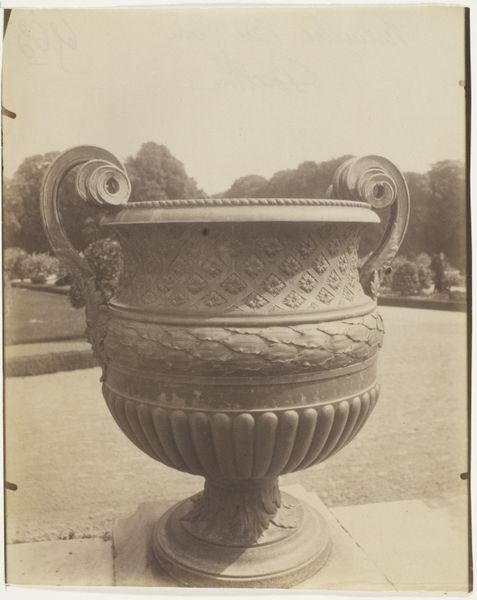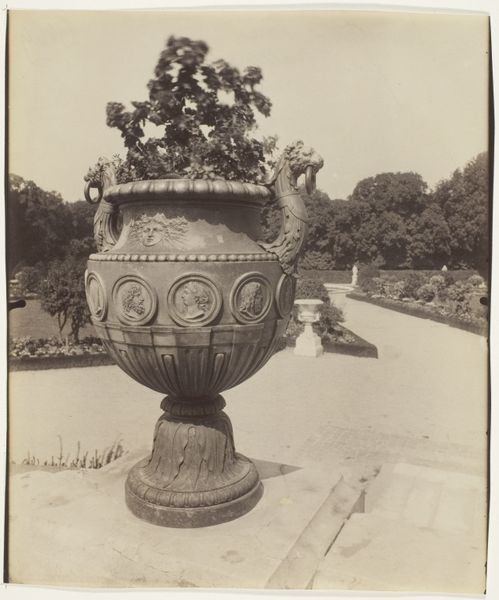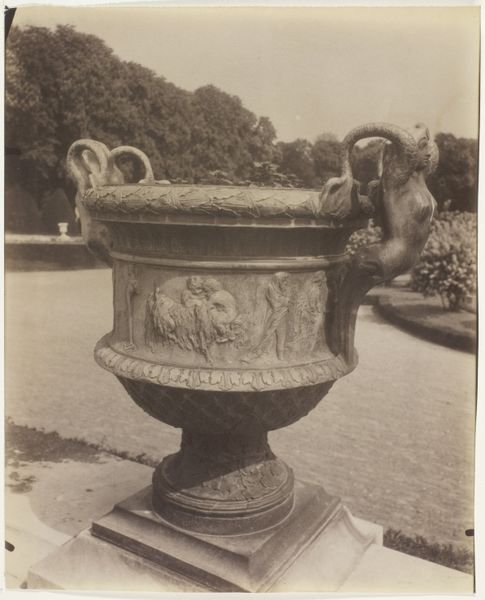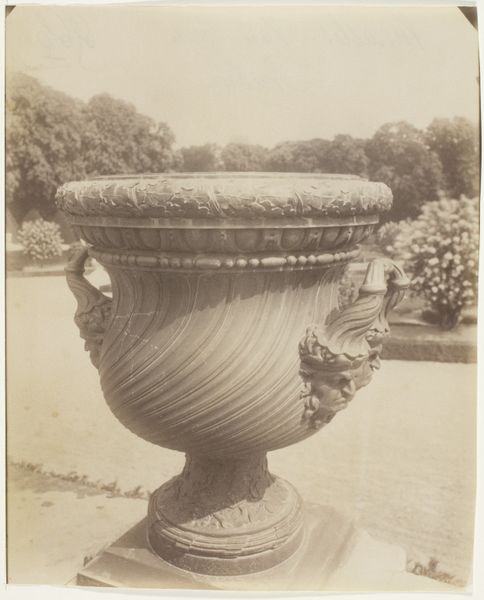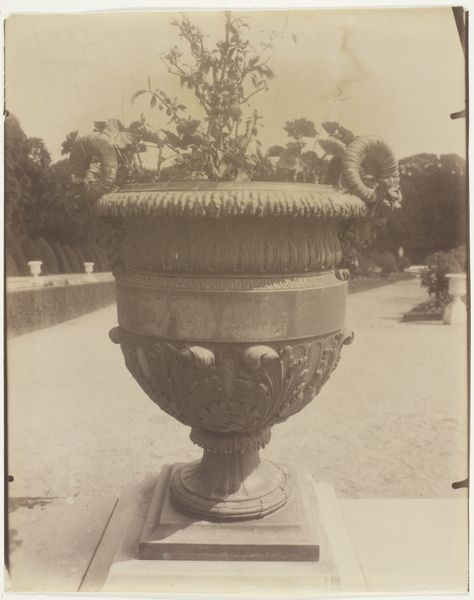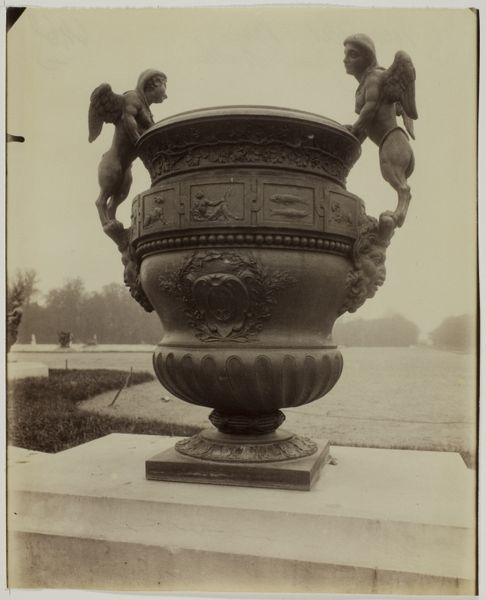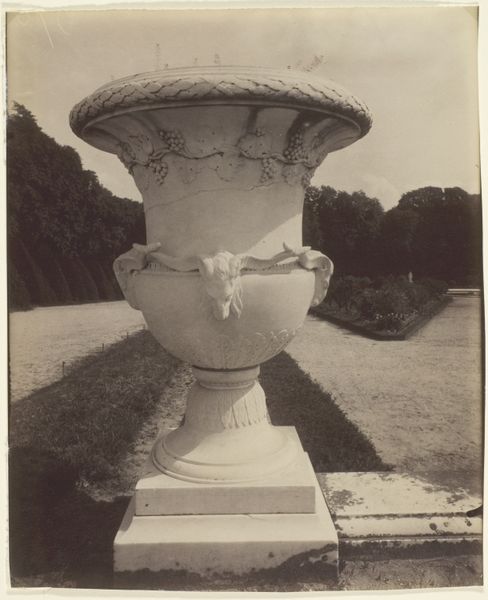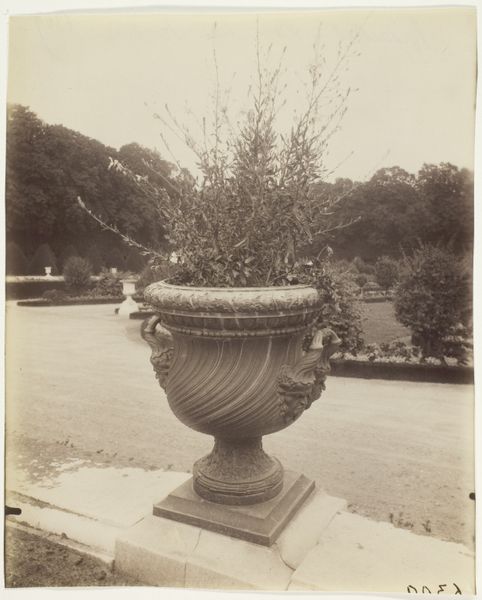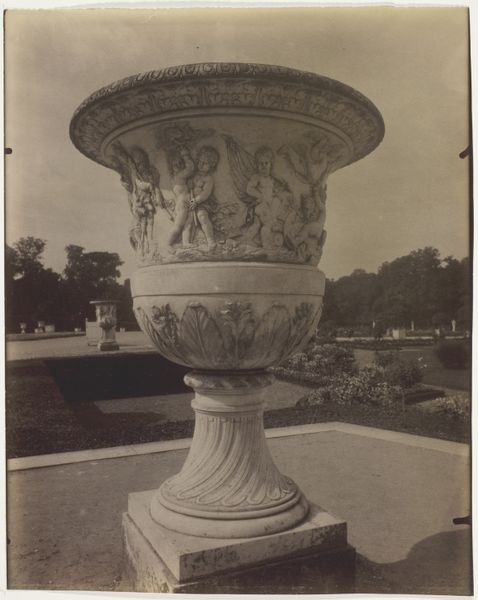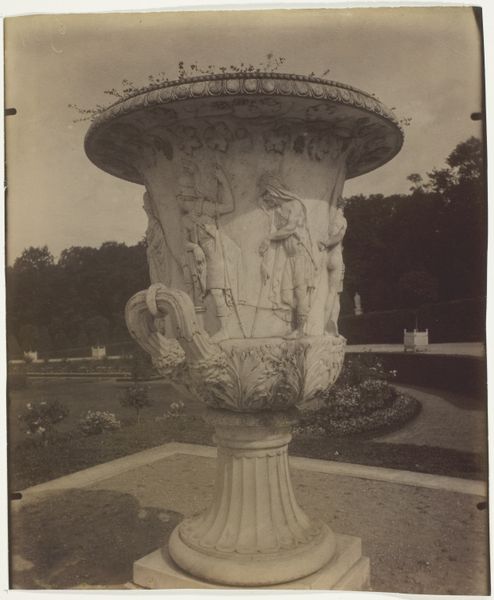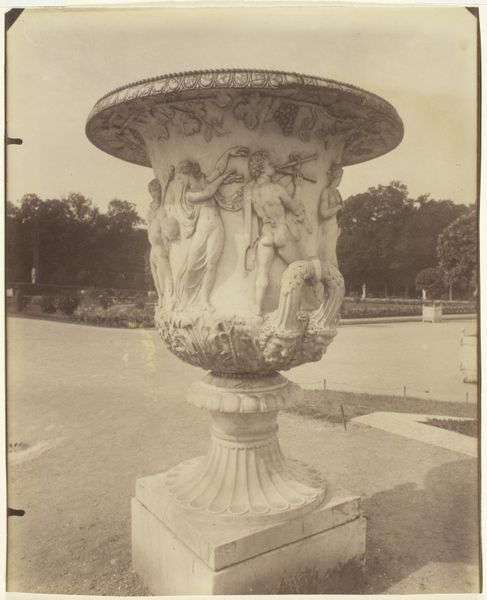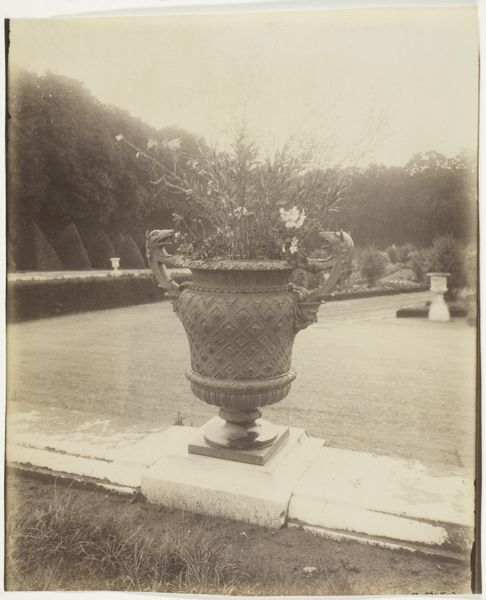
print, photography, sculpture
#
portrait
#
still-life-photography
#
neoclassicism
# print
#
wedding photography
#
landscape
#
photography
#
historical photography
#
sculpture
#
france
#
men
Dimensions: 21.9 × 17.6 cm (image/paper)
Copyright: Public Domain
This photograph of a vase at Versailles was taken by Eugène Atget sometime in the early 20th century. What gets me about this image is the way it captures light, especially the way it flattens the three-dimensional space, turning the vase into a kind of relief. It’s a photograph of a sculpture, and like all sculpture, it is concerned with surface, with the material qualities of the form. I see the vase not just as an object, but as a record of its own making. The method of photography that Atget used - probably an early large format camera and printing out paper - has such a beautiful tonal range, a kind of soft glow that makes the stone almost seem like flesh. Look at the way the cherubs are rendered. They almost look alive, deep in thought, perched on the rim. Atget, like other photographers such as Walker Evans, was interested in creating a record of a disappearing world. Like their photographs, we as artists work within specific historical moments that are always in dialogue with the past. We absorb, transform, and respond to it. There is no fixed meaning or a single interpretation. The conversation continues.
Comments
No comments
Be the first to comment and join the conversation on the ultimate creative platform.
